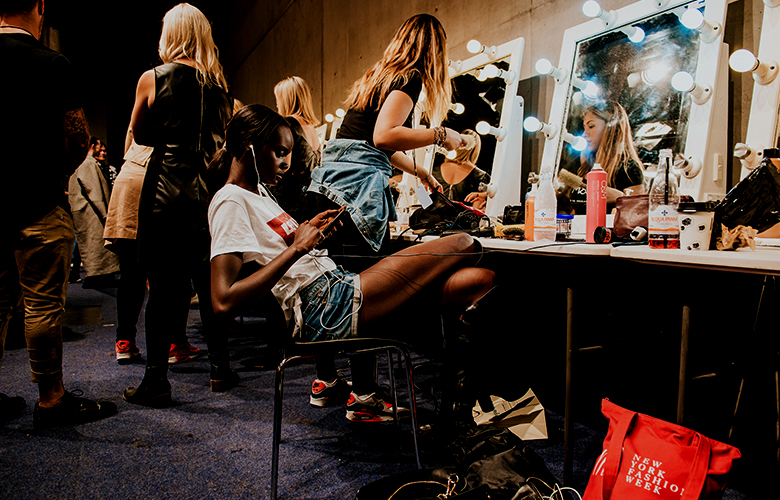
The backstage area on community or school productions can quickly become a veritable tornado of costume chaos with big casts. I’ve been there; the biggest production I’ve directed so far was The Wedding Singer which had 36 high school-aged actors and lots of costume changes! Yet that’s small potatoes for some; I’ve seen school productions which include entire grade levels… 100+ kids!
Unless you are fortunate enough to have individual dressing rooms for each actor, it’s pretty much a given that there will be one common area where all the costumes are kept, and where actors get dressed before and after a show. As well, most community and school theatre productions are not staffed by a team of costume designers and dressers; more likely it is the responsibility of a group of dedicated volunteers and/or parents, who need quick and easy ways of keeping the chaos to a minimum.
To keep your costume area sane and tidy, here are some quick tips to help you out.
Simply cut a slit to the centre of a paper plate and then a small circle in the centre and pop it on the rack, or use a piece of paper or cardstock folded in half with a notch cut into the top, hung over a hanger.
If you have time to, get your actors to rehearse quick changes so there is less chaos backstage.
Have you worked on a school or community production and developed some other backstage hacks? We would love to know about them!
Three Theatre Games To Break The Ice


Kerry Hishon is an actor, director, stage combatant, and writer living in London, Ontario, Canada. She earned a Bachelor’s Degree in Stage & Screen Studies from Queen’s University (Kingston, Ontario) in 2006, and has been working in youth theatre since 2008. She has directed shows for the Original Kids Theatre Company since 2010, including Peter and the Starcatcher, Tarzan, The Wedding Singer, Disney's The Little Mermaid Jr., Fiddler on the Roof Jr. and many more. She has taught OKTC's T.A.G. (The Actor Grows) program for five years, teaching the basics of theatre to over 60 new company members each year. She has directed, taught, acted and written for various theatre companies throughout Ontario, and recently enjoyed her first experience as choreographer for Time Warp: 50 Years of the Rock Musical with Musical Theatre Productions. Kerry is a member of Art of Combat and has trained in stage combat in London Ontario (Shrew'd Business) and New York City (AoC) since 2010. Kerry is a Drama Teacher Academy Instructor with her course Theatre Etiquette 101, as well as a featured blogger for Theatrefolk.com, specializing in posts on rehearsal procedures. She also writes at her own blog, kerryhishon.com. In her free time, Kerry enjoys travelling, reading, knitting, and dancing.
Read Full Profile© 2021 TheatreArtLife. All rights reserved.

Thank you so much for reading, but you have now reached your free article limit for this month.
Our contributors are currently writing more articles for you to enjoy.
To keep reading, all you have to do is become a subscriber and then you can read unlimited articles anytime.
Your investment will help us continue to ignite connections across the globe in live entertainment and build this community for industry professionals.